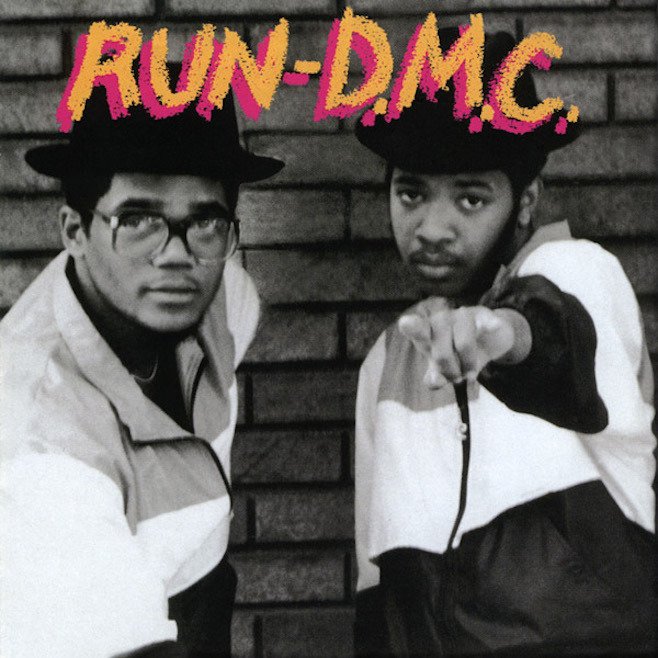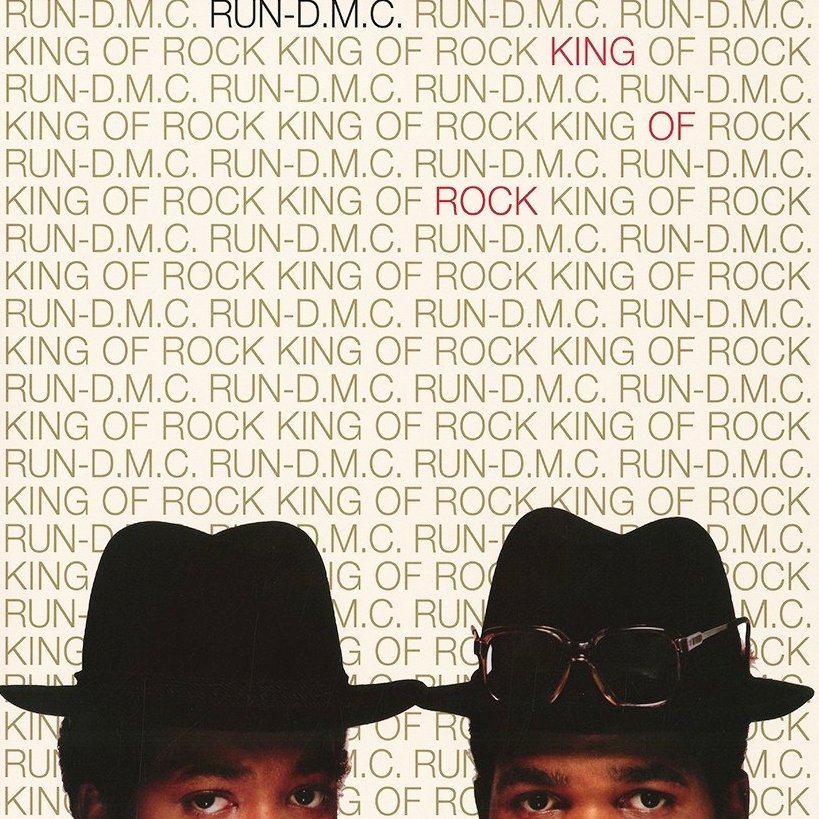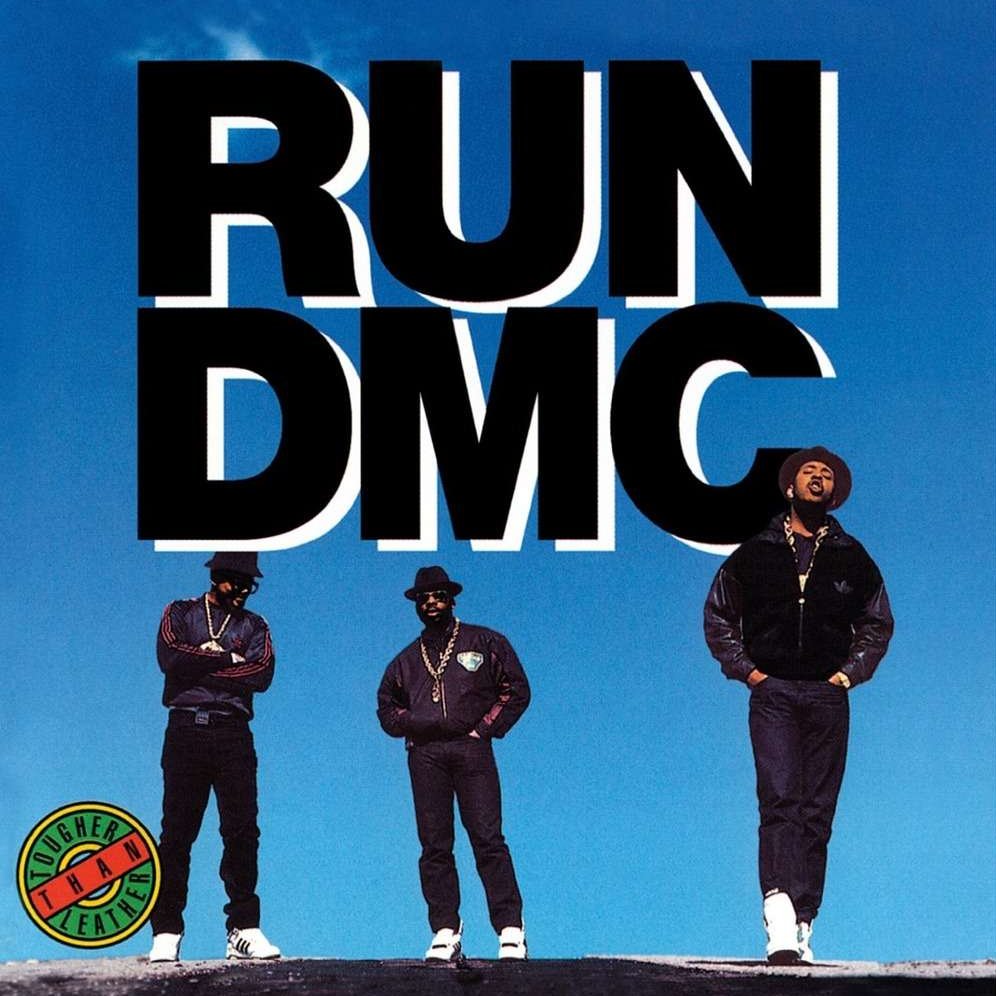Happy 30th Anniversary to Run-DMC’s sixth studio album Down With The King, originally released May 4, 1993.
Run-DMC defined rap music’s language, image, and song structure more than most other hip-hop artists. Comprised of Joseph “Run” Simmons, Darryl “DMC” McDaniels, and Jason “Jam Master Jay” Mizell, they were the genre’s first “modern” group, bringing a serious no-nonsense approach to their music in the early 1980s. They defined what a hip-hop song and album would sound like.
So, it was rather unsettling that the group was in such a lackluster state in the early 1990s. They had faced challenges in the late 1980s, as delays had sidetracked their fourth album, Tougher Than Leather (1988). Tougher Than Leather was undeservedly maligned and is a damn good album overall, but the general sentiment was that the architects of hip-hop’s new school were behind the times.
Then things got worse. They ended the 1980s by beginning efforts to court more mainstream acceptance, but things felt increasingly clunky and forced. They gave a questionable performance at WrestleMania V. They recorded a fairly lousy theme song for Ghostbusters 2 (1989).
Then, towards the end of 1990, they released Back From Hell, their ill-conceived and poorly received fifth album. Though they recorded a handful of good material, much of it fell very, very flat. They were now openly chasing trends, recording limp attempts at New Jack Swing and incorporating superficial R&B vocals into their songs. The issues were typified in the album’s first single, “Pause.” So much of that song goes horribly wrong, including a strained debut verse by Jam Master Jay and overtly ridiculous sax solo by their homie Stanley Brown.
This series of poor decisions made Run-DMC the first respected New School hip-hop group to fall off. There are countless groups across all genres of music that have lost their way after releasing five albums. But for hip-hop, where very few artists had five albums to their name, it was uncharted territory. Further complicating matters was that all three members of the crew were encountering various personal setbacks. The list of issues included criminal charges, injuries, and substance abuse.
Amidst it all, Run-DMC experienced a spiritual awakening, with Run in particular adopting a newfound religious fervor. Usually finding religion tends to be another nail in the coffin for many artists, but Run-DMC found inspiration, infusing spirituality into their music without sounding overwrought. It resulted in Down With The King, their sixth studio album, released 30 years ago. The group was reborn, reinventing themselves for a new generation of hip-hop listeners.
One of the key changes for the trio manifested in the group adopting a new look. Gone were the leather jackets, “gangster” hats, and Adidas suits. Instead, all three members of the group switched up to all black Carhartt suits. They traded in the unlaced Adidas shoes for black Timberland boots. Run was rarely seen not wearing sunglasses. DMC traded in his trademark black Cazal glasses for contact lenses. In a seeming nod to Onyx, a group that Jam Master Jay had mentored and signed to his own imprint, all three members shaved their heads.
Listen to the Album:
They also largely shifted their sound. Though they gave up blatant attempts at pop appeal, they did embrace various production styles of the time. This came from enlisting some of the most notable producers of the early to mid-1990s. It was heartening at the time to see some of the best beat-makers coming together to provide their forefathers with what they hoped would lead to a proper comeback.
There was some initial shock in ceding control of the production aspect of the recording process. In an interview by Gang Starr’s Guru (R.I.P.) in Hip Hop Connection, Run said, “I was kind of dazed, but you know it was cool, going from person to person. I was nervous trying to gather this together. I just wanted to go into the studio and come out with things that I knew were dynamic. I put my input in, and I let them put in their new stuff, ‘cos I didn’t want to be stagnant. I didn’t want to be like, Prince, or something. Like ’cos he feel he gotta do it all his self.”
Ultimately, Down With The King is a respectable entry in Run-DMC’s discography. It would not be accurate to say that it’s a return to form, as the group mostly embraces hip-hop’s contemporary sound, and not as clumsily as they did on Back From Hell. Not everything on the album works, but there are a good deal of enjoyable moments.
Down With The King certainly starts on the right note, opening with its title track, which served as the album’s first single. The song was produced by Pete Rock, then basking in his early ’90s glow as the hottest/best producer in hip-hop and features guest verses from both him and C.L. Smooth. The track is well-structured as both sets of respective duos give their own interpretations of “Down With The King”: For Run and DMC, it’s about the importance of God in their lives, while for Pete Rock and C.L. Smooth, it’s about the importance of Run-DMC.
Pete Rock’s production makes the song a triumphant hymn, as he samples the opening guitar from Hair’s “Where Do I Go?” with ghostly choral vocals. Each of the four verses work well, though Run and C.L. Smooth sound the most energized. The song stands as the best song on the project, and ranks among Run-DMC’s all-time great recordings, as well as an all-time great single from the mid-1990s era.
The album bounces around from production style to production style. A Tribe Called Quest laces “Come On Everybody” with a jazzy, horn-heavy grove, but it ultimately clashes with Run and DMC’s rhyme styles. “Can I Get It, Yo,” produced by EPMD is a better fit. Run and DMC utilize something closer to their mid-1980s cadences over the thick and muddy track.
Kay Gee hooks up a piano-driven track on “Hit ‘Em Hard,” but the final result sounds like Run-DMC doing Naughty By Nature karaoke. Run does a spot-on Treach impression (the Jersey emcee almost certainly wrote the verse), both in cadence and vocal tone. In fact, with minimal changes, it sounds like something Treach would have delivered on 19 Naughty III (1993), released earlier that year.
Hank Shocklee of the Bomb Squad is more successful at creating beats that play to Run-DMC’s strengths while still being different than the group’s best-known productions. He produced a pair of songs for Down With The King, the better of the two is the album’s second single “Ooh, What Cha Going to Do?” Critics at the time said the track featured Run-DMC adopting a more West Coast style, but that’s likely due to the presence of a sample of Ohio Players “Funky Worm.”
The track does differ from The Bomb Squad’s trademark “wall of sound” approach, but still sounded unique for the time, as they mix in portions of Ramsey Lewis’ version of “Look of Love” and the horn outro of Maceo and the Mack’s “Soul Power ’74.” DMC contributes his strongest verse on the album, rhyming with passionate energy rather than his usual detached cool. “Bust a rap like a cap, put a hole in your soul,” he states. “Take the trigger then you figured that I’m losing control / I go loco with the vocals, yo goes the chokehold / And I broke those pros with the dope flows.”
Enjoying this article? Click/tap on the album covers to explore more about Run-DMC:
“Can I Get a Witness,” produced by Jermaine Dupri, is pretty entertaining. This was Kris Kross-era Dupri, rather than Usher and Monica-era Dupri, so the production is dense and layered. The producer mixes keyboard squeals and braying horns, creating something that sounds reminiscent of Kris Kross’ “Warm It Up.” The track works well with Run and DMC’s vocals, with Run chiding up-and-comers for counting the group out. “I didn't get old, I got better at the craft,” Run raps. ”Sat back and watched you try to kick it, but you made us laugh.”
One development that remains from Back From Hell is the continued presence of Jam Master Jay on the mic. He’s improved a bit since “Pause,” but he’s best served staying behind the turntables. Besides the aforementioned “Can I Get It, Yo,” he contributes verses to the two tracks produced by Chyskillz, who worked behind the boards for the majority of Onyx’s debut album Bacdafucup (1993). “Get Open,” has a similar texture to an Onyx track, though it doesn’t possess quite as vibrant of wattage. The young crew of bald-heads appears on the track’s chorus, lending as much of their presence as they can.
“What’s Next” is the mid-1990s version of “Roots, Rap, Reggae,” from King Of Rock (1985). Whereas “Roots…” tried to emulate the spare aesthetic of mid-1980s dancehall, “What’s Next” captures the lush production featured on a lot of the early 1990s dancehall. And whereas “Roots…” featured the talents of Yellowman, Run-DMC enlists Mad Cobra for “What Next.” Cobra all but recreates the hook he used for “Flex,” his mega-hit of the time. “Roots…” was an odd duck on King Of Rock and “What’s Next,” while decent enough, still sticks out like a sore thumb on the album.
With all the efforts by Run and DMC to modify their styles to fit mid-1990s production sensibilities, the down-and-dirty, back-to-basics approach brings out the best in the crew. “Big Willie” evokes the trio’s mid to late 1980s hey-day, particularly the electric-guitar driven title tracks from King Of Rock (1985), Raising Hell (1986) and Tougher Than Leather. The group and Daniel Shulman handle the production; Shulman played bass on Raising Hell and Tougher Than Leather, and would later tour and perform with Garbage.
Instead of Eddie Martinez, an accomplished session musician and the group’s go-to axe-man on their earlier material, “Big Willie” features Tom Morello of Rage Against the Machine. Down With The King was released just months after Rage’s self-titled debut album, so Morello was still a young phenom. His complex and blistering guitar solos make “Big Willie” bruising and confrontational. The track also features the only instance of Run and DMC passing the mic back and forth, a tactic which made each of their respective performances shine on earlier material. Jam Master Jay is also sharp on the two turntables, where he sounds as comfortable as ever.
Down With The King was a commercial success for the group, ending up Gold-certified by the RIAA. It led to the crew extensively touring in efforts to reintroduce themselves to a wider audience. Soon after the album’s release, Run became a full-fledged Reverend, further dedicating himself to the church.
Three decades later, Down With The King is on the creakier side, with much of its material not aging as gracefully as Raising Hell or even Tougher Than Leather. But what Down With The King represented is even greater than the quality of the material alone. Fellow rappers looked out for the legends of the genre, coming together to celebrate their greatness. And for the most part, Run-DMC rose to the occasion, clawing its way out of the abyss and making a memorable release.
Listen:





